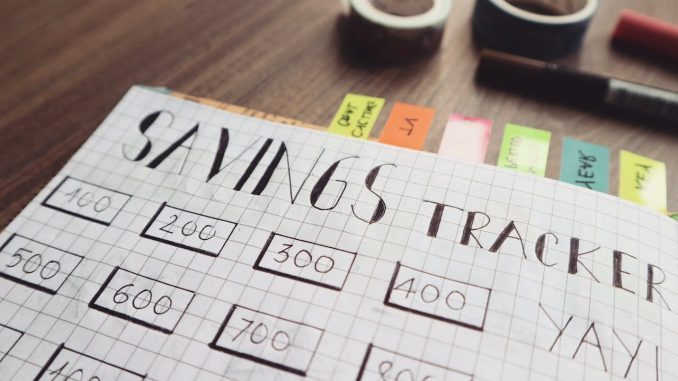
Are you tired of setting a budget that fails after a week? You’re not alone. Learning how to make a budget that actually works is a game changer—and this 2024 step-by-step guide will help you do just that. Whether you’re a financial newbie or just need a better system, this guide breaks down budgeting for beginners, with tools, templates, and real-life success stories.
5 Shocking Statistics About Budget Failures (2024 Data – Federal Reserve)
- 64% of Americans are living paycheck to paycheck, even those earning over $100,000/year.
- 44% of people say unexpected expenses completely derail their monthly budget.
- 57% don’t track their spending at all.
- 28% of credit card holders only pay the minimum balance due.
- 71% of U.S. adults have no written budget plan.
These numbers, sourced from the 2024 Federal Reserve Consumer Finance Survey, highlight the importance of having a realistic, working budget.
Step 1: Understand Your Financial Goals
Begin with your “why.” Do you want to get out of debt, save for a house, or just stop stressing about bills? Clear goals will shape the rest of your budgeting plan.
Step 2: Choose the Right Budgeting Method
Not all budgeting systems are created equal. Here’s a breakdown of the most popular strategies:
Budgeting Methods Comparison
| Feature | 50/30/20 Rule | Zero-Based Budget | Pay-Yourself-First |
|---|---|---|---|
| How it Works | Allocates income into Needs (50%), Wants (30%), Savings/Debt (20%) | Assigns every dollar a job | Automatically saves first, then budgets the rest |
| Best For | Beginners | Detailed planners | Those prioritizing savings |
| Effort Required | Low | High | Medium |
| Flexibility | Moderate | Low | High |
| Financial Discipline | Medium | High | Medium |
Tip: If you’re new to budgeting for beginners, start with the 50/30/20 rule and evolve from there.
Step 3: Track Your Income and Expenses
Write down all income sources and fixed expenses (rent, utilities, loans). Then track variable costs (groceries, gas, entertainment) over a month to establish spending patterns.
Step 4: Pick a Budgeting App That Works for You
App Showdown: Mint vs. YNAB vs. EveryDollar
| App | Pros | Cons |
|---|---|---|
| Mint | Free, automated tracking, credit score monitoring | Ads, limited customization |
| YNAB | Zero-based budgeting, goal tracking, excellent support | Subscription required ($14.99/month), learning curve |
| EveryDollar | Clean UI, Dave Ramsey-backed, ideal for zero-based budgeting | Free version lacks syncing; paid is $12.99/month |
Looking for the perfect financial tool? Check out our top-rated budgeting platforms that streamline your money management.
Step 5: Build Your First Monthly Budget
- List income: Include all income sources.
- Categorize expenses: Divide into fixed, variable, and irregular.
- Set limits: Base them on past trends and future goals.
- Adjust monthly: Real-life fluctuates, so should your budget.
Step 6: Monitor and Adjust Weekly
Budgeting isn’t “set it and forget it.” Review your budget weekly. Tweak categories. Celebrate wins. Stay engaged.
Case Study: How Sarah Paid Off $20K Debt in 8 Months
Sarah, a 32-year-old teacher from Ohio, had $20,000 in credit card and student loan debt. She tackled it using the zero-based budgeting method and the YNAB app.
Sarah’s Debt Payoff Timeline:
| Month | Action Taken | Debt Paid | Notes |
|---|---|---|---|
| Jan | Created first budget, cut dining out | $1,200 | Stopped eating out completely |
| Feb | Picked up weekend tutoring | $1,500 | Extra $400/month income |
| Mar | Sold unused items on Facebook | $2,000 | Used toward highest-interest card |
| Apr | Got roommate to split rent/utilities | $2,000 | Reduced housing cost by 40% |
| May | Switched to cash envelope system | $2,200 | Controlled impulse spending |
| Jun | Took on summer school teaching | $3,000 | Boosted savings for emergencies |
| Jul | Paid off final credit card balance | $4,100 | Celebrated with budget-friendly trip |
| Aug | Debt-free! | Total: $20,000 | Debt-free in 8 months! |
Sarah’s key takeaway? “Knowing where every dollar went changed everything. I finally felt in control.”
Step 7: Automate Your Savings
Use automatic transfers to fund your emergency savings, retirement, or investment accounts. Start small—$50 a week builds up fast.
Step 8: Review and Improve Monthly
At month-end, evaluate what worked and what didn’t. Did groceries exceed the limit? Was a budget category too tight? Adjust for next month.
Before you go: Want pro budgeting tips delivered weekly? Sign up for our newsletter and take control of your money.
Bonus: Free Budgeting Template
We created a free Google Sheets Budget Template tailored to beginners. It includes:
- Monthly budget planner
- Expense tracker
- Savings goal calculator
Final Thoughts
Learning how to make a budget isn’t about restriction—it’s about freedom. A great budget gives you peace of mind, empowers decision-making, and helps you build the life you want.
If you’re serious about taking control of your finances, choose a method, get an app, and start tracking. Budgeting for beginners doesn’t have to be hard—just intentional.
Leave a Reply